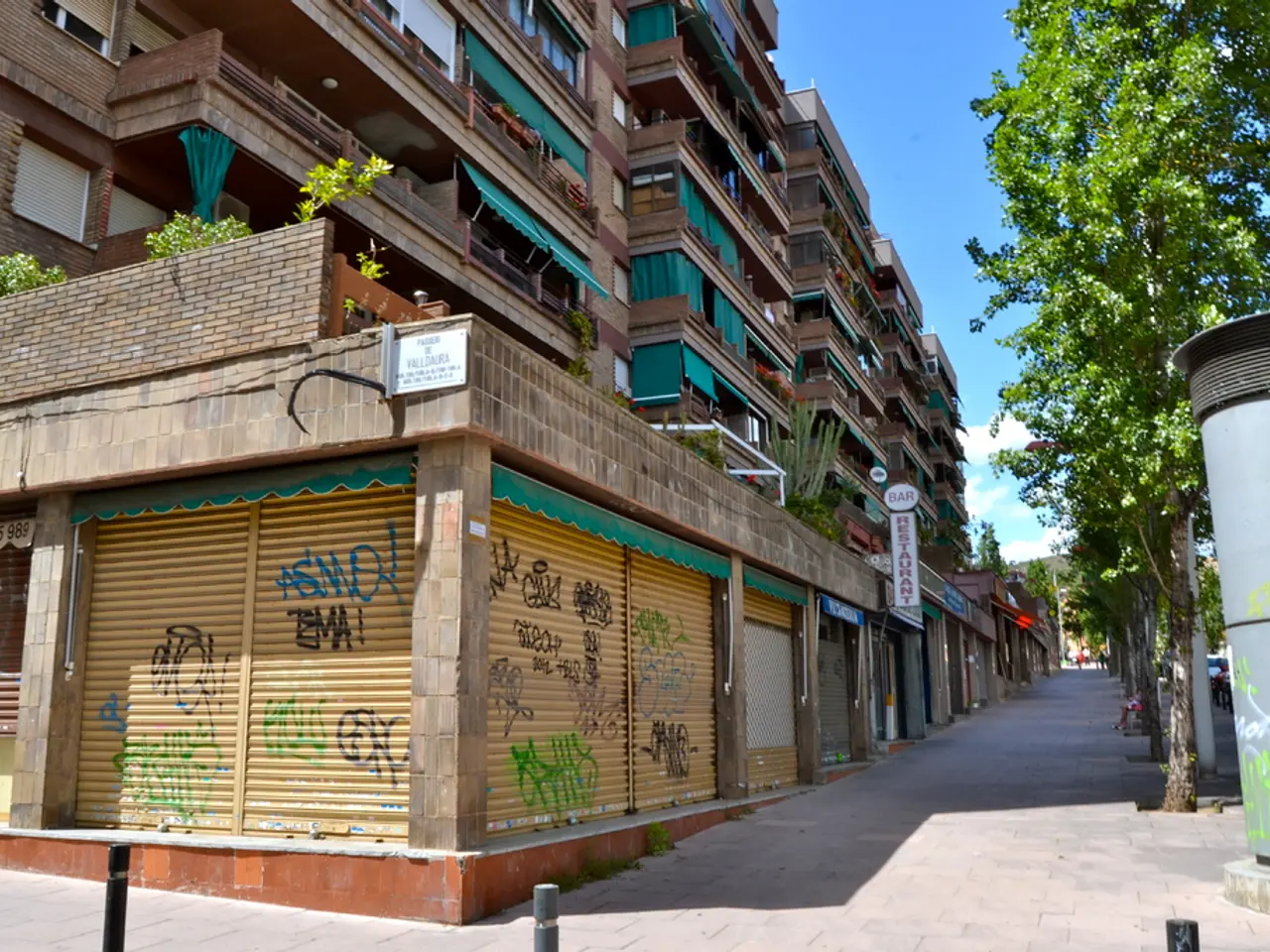Barbora Vanek: Identified Individual in Focus
Barbora Vanek, a Building Performance Specialist at AHMM based in their Bristol office, is a passionate advocate for regenerative architecture. She believes that this practice paradigm should be the future of the industry, as it aims to create buildings and urban environments that have net-positive ecological, social, and cultural impacts.
Vanek often gets involved with projects in the early design stages, a time she considers crucial for sustainability aspirations. "Changes made at this stage can have a significant impact, especially at the scale of AHMM's developments," she explains.
Her team's work is evident in projects like Angel Square and 1 Victoria Street, where they strive to re-use as much as possible and keep existing structural elements when feasible. This approach not only reduces waste but also contributes to the regeneration of the cityscape.
Beyond Sustainability: Regenerative Architecture Strategies
Current strategies in implementing regenerative architecture in large-scale projects focus on beyond sustainability. This approach aims to create buildings and urban environments that generate more energy than they consume, purify water, regenerate soils, and restore ecosystems.
Key strategies include holistic regenerative design frameworks, biomimicry and nature connection, multi-capital and ecosystem-oriented value creation, modular, adaptable construction, and the use of mechanically fixed components and modular timber construction.
Holistic Regenerative Design Frameworks
Regenerative architecture moves past traditional energy efficiency towards systems that can generate more energy than they consume, purify water, regenerate soils, and restore ecosystems.
Biomimicry and Nature Connection
Inspired by natural cycles and rhythms, this approach emphasizes architecture as a living process harmonizing with ecological rhythms, utilizing materials and methods that respect natural cycles and biodiversity.
Multi-Capital and Ecosystem-Oriented Value Creation
Organizations and projects are increasingly recognizing the importance of multi-capital value — financial, ecological, social, and cultural — and seek to create closed-loop systems that orchestrate value creation and consumption at the ecosystem scale.
Modular, Adaptable Construction
Use of mechanically fixed components and modular timber construction enables buildings to adapt over time without waste, facilitating long-term biodiversity and material lifecycle management.
Challenges in Implementing Regenerative Architecture
Despite its benefits, implementing regenerative architecture in large-scale projects presents several challenges. These include integration across scales and disciplines, measurement and certification of biodiversity benefits, balancing innovation and tradition, long-term adaptability and resilience, and addressing the cultural and social dimensions of regeneration.
Integration Across Scales and Disciplines
Implementing regenerative architecture in large-scale projects requires coordination across sectors (ecology, urban planning, architecture, social systems) and scales (from buildings to whole cities). This multi-disciplinary orchestration remains complex and experimental.
Measurement and Certification of Biodiversity Benefits
While carbon markets and credits are better established, biodiversity and ecosystem service credits are still nascent, with unclear applicability and evolving frameworks, which can impede financial incentivization for biodiversity-friendly design.
Balancing Innovation and Tradition
There is a tension between advanced technology and ancestral or holistic ecological knowledge. Finding harmonies that leverage both to foster biodiversity and system resilience requires humility and ongoing learning.
Long-Term Adaptability and Resilience
Buildings and ecosystems must be designed for adaptability over decades or centuries, posing challenges for design, material selection, and community integration.
Cultural and Social Dimensions
Regeneration encompasses social and cultural systems as well as ecological ones, creating complex challenges for stakeholder engagement, equity, and governance.
Vanek acknowledges these challenges but remains optimistic. "The construction industry, including AHMM, is one of the largest greenhouse gas emitters," she says, "but I believe that with continued effort and collaboration, we can make a significant positive impact."
In her role, Vanek works across various projects, assisting with their sustainability aspirations as part of her role. The Building Performance team at AHMM has grown in the past four years and has broad expertise in house. They have encouraged the shift in climate literacy within the practice and the wider industry through various research publications.
One example of their work is the TQEC Research Hub in Bristol, an innovative project that reinvented structures that might have otherwise been demolished. Vanek is the only member of sustainability staff in Bristol, but one of five in The Building Performance team across AHMM.
Vanek has observed a shift in recent years, with architects, clients, and design teams becoming more aware of the sustainability discourse and developing knowledge in areas like embodied carbon assessment. She believes that this growing awareness will lead to more regenerative projects in the future.
References:
[1] Ramboll. (2020). Regenerative Architecture. Ramboll. https://www.ramboll.com/regenerative-architecture
[2] Regenerative Cities. (n.d.). Regenerative Cities. Regenerative Cities. https://regenerativecities.org/
[3] Steiner, R. (1924). The Threefold Social Order. Anthroposophic Press.
[4] International Living Future Institute. (2020). Living Building Challenge. International Living Future Institute. https://living-future.org/programs/lbc/
- Barbora Vanek believes that regenerative architecture's focus on creating buildings and urban environments that generate more energy than they consume, purify water, regenerate soils, and restore ecosystems should align with the industry's future aspirations.
- In planning large-scale projects, the challenge of balancing innovation and tradition arises, as finding harmonies that leverage both advanced technology and ancestral ecological knowledge is crucial for fostering biodiversity and system resilience.
- Identifying strategies such as modular, adaptable construction and mechanically fixed components, along with holistic regenerative design frameworks, can facilitate the creation of buildings that can adapt over time without waste, promoting long-term biodiversity and material lifecycle management.




